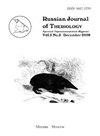啮齿类动物社会性的进化:一个家庭事件
IF 0.6
4区 生物学
Q4 ZOOLOGY
引用次数: 5
摘要
社会性意味着集体生活。在啮齿类动物中,最具社会性的物种生活在通常由不多的个体组成的家族中。因此,啮齿类动物社会性的进化不是群体规模的进化。家庭群体的生活方式与长期的伴侣关系、父母双方参与照顾孩子以及在不同活动中的合作有关。在家庭群体中,合作从一开始就开始,当一对繁殖对建立、保护和标记其家园,挖掘洞穴或建造其他庇护所,并提供照顾活动时。建议通过对幼鼠的触觉刺激来进行直接的父母照顾(尤其是父亲照顾),以促进亚成年和成年雄性的长期伴侣关系和随后父母行为的发展,这是高度社会化啮齿动物物种的典型特征。这种现象具有表观遗传学性质,可以被认为是“相似的刺激”。当由于后代的延迟分散而导致家庭群体的规模增加时,合作就会扩大和加强。根据所提出的概念模型,考虑到交配对以及家庭群体由于合作而比单独的同种更具竞争力,无论捕食压力或资源分布如何,家庭群体都可以在任何生态条件下形成。主要驱动力是与年轻人在出生后早期发育和合作过程中的触觉刺激相关的近因机制。这个概念模型提供了对不同啮齿动物分类群中社会性进化(即向家族-群体生活方式的转变)的更好理解。如何引用这篇文章:Gromov V.S.2017。啮齿类动物社会性的进化:家族事务//俄罗斯人J.Theriol。第16卷第1期。P.47–65.doi:10.15298/rusjtheriol.6.1.05本文章由计算机程序翻译,如有差异,请以英文原文为准。
The evolution of sociality in rodents: a family affair
Sociality means group-living. Among rodents, the most social species live in family groups that consist as a rule of not numerous individuals. Hence, the evolution of sociality among rodents is not a group-size evolution. A family-group lifestyle is associated with long-lasting pair bonds, participation of both parents in care of young, and cooperation in different activities. In family groups, cooperation starts from the very beginning when a breeding pair establishes, protects and marks its home range, digs burrows or constructs other shelters, and provides care-giving activities. Direct parental care (especially paternal care) by means of tactile stimulation of the young is suggested to promote long-lasting pair bonds and development of subsequent parental behaviors in sub-adult and adult males that is so typical of highly social rodent species. This phenomenon has an epigenetic nature and could be considered as ‘stimulation of similar with the similar’. Cooperation extends and intensifies when the size of family groups increases as a result of delayed dispersal of the offspring. According to the proposed conceptual model, family groups could be formed under any ecological conditions, irrespective of predation pressure or resource distribution, given that mating pairs and, furthermore, family groups are more competitive due to cooperation than solitary conspecifics. The main driving forces are proximate mechanisms related to tactile stimulation of young individuals during their early postnatal development and cooperation. This conceptual model provides a better understanding of the evolution of sociality (i.e. transition to a family-group lifestyle) in different rodent taxa. How to cite this article: Gromov V.S. 2017. The evolution of sociality in rodents: a family affair // Russian J. Theriol. Vol.16. No.1. P.47–65. doi: 10.15298/rusjtheriol.16.1.05
求助全文
通过发布文献求助,成功后即可免费获取论文全文。
去求助
来源期刊

Russian Journal of Theriology
Agricultural and Biological Sciences-Animal Science and Zoology
CiteScore
0.90
自引率
33.30%
发文量
0
期刊介绍:
The Russian Journal of Theriology publishes papers on all aspects of mammalian biology: taxonomy, zoogeography, ecology, behavior, morphology, development, physiology, paleontology, and evolution. Studies of extinct as well as extant taxa are included. Reviews are also published; these may be invited by the Editorial Board.
 求助内容:
求助内容: 应助结果提醒方式:
应助结果提醒方式:


